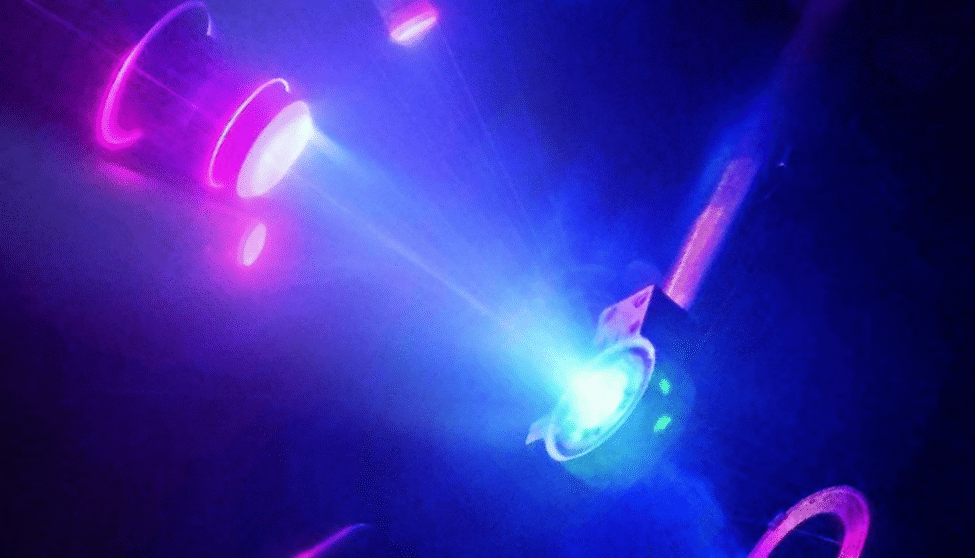 Image: U.S. Department of Energy
Image: U.S. Department of Energy
Knighthood, DOE Awards At Princeton Fusion Lab
In May 2018, Steven Cowley, former head of the UK Atomic Energy Authority and president of Corpus Christi College at the University of Oxford, was named the new director of Princeton Plasma Physics Laboratory (PPPL). This month, Cowley has received a knighthood from Queen Elizabeth II, for “services to science and the development of nuclear fusion.”
PPPL’s current interim director, Rich Hawryluk, stated that this honor was “most deserved” due to Sir Steven’s role in advancing fusion energy, and that the lab was thrilled to have him “leading the world’s quest for fusion energy” from Princeton.
Some have said that nuclear fusion is the energy source of the future, and always will be- it can seem too good to be true. Fusion produces no greenhouse gas emissions, no long-lived nuclear waste, and its starting materials can be as easy to obtain as hydrogen- the universe’s simplest element.
Fusion simply involves taking very small atoms, like hydrogen, and applying so much heat and pressure that the nuclei at the center of two atoms can fuse together. When the new fused nucleus is formed, it is slightly smaller than the two nuclei that preceded it, so the extra mass is emitted as energy.
Although fusion was first demonstrated in a lab in 1932, the difficulty lies in making it economically viable. Creating the necessary heat and pressure for fusion can take a lot of energy, so a successful commercial fusion reactor needs to generate more energy than it uses.
PPPL operates the National Spherical Torus Experiment Upgrade (NSTX-U), the most powerful spherical tokamak fusion reactor in the world. As a tokamak reactor, it uses very powerful magnetic fields to achieve the levels of heat and pressure needed for fusion.
While the NSTX-U suffered disabling faults in 2016, DOE is currently considering recovery plans for the reactor. Unlike most other tokamaks, which are donut-shaped, the NSTX-U is spherical. This is because current theories indicate that this shape applies the magnetic fields more efficiently, leading to more cost-effective fusion power.
In addition to Sir Steven’s knighthood, two PPPL researchers have received Early Career Research Awards from the DOE Office of Science this June. Physicists Dr. Nate Ferraro and Dr. Sam Lazerson will each receive funding for the next five years, to advance fusion technology and reactor design in two very different ways.
Dr. Ferraro will continue his work on an advanced computer code that simulates fusion reactions. These simulations allow him to model changes to fusion reactors, ultimately creating a predictive model for designing and optimizing future tokamaks. The American Association for the Advancement of Science (AAAS) calls his innovations a “blueprint for improved future fusion devices.”
Meanwhile, Dr. Lazerson uses different energy particles to simulate fusion reactions, investigating the optimal shape for magnetic fields. Rather than the spherical design used by the NSTX-U, Lazerson focuses on a twisting reactor called a stellarator. If Lazerson’s magnetic field optimization works, it could lead to real breakthroughs in stellarator design, according to the AAAS.
Despite the advances made by PPPL and other fusion labs, a lack of public funding still cripples the U.S.’ ability to take advantage of advances in fusion technology. The president’s budget proposal for FY2019 included a 36% cut in fusion research funding, and although “Congress is unlikely to approve that cut,” according to Science, inadequate funding still causes the U.S. to fall behind other countries in fusion research.
Currently, most of the largest and most advanced fusion reactors are in Europe and Asia, and if the U.S. is not careful, we will become irrelevant in the fusion field just as it becomes economically viable. Sir Steven Cowley, Dr. Ferraro, and Dr. Lazerson’s work is making the energy of the future look closer and closer, and America should be at the forefront of fusion technology when that future arrives.
The American Security Project’s affiliate, the American Fusion Project, works to keep the U.S. on the cutting edge of fusion research by promoting policymaker education, public awareness, and public-private cooperation on fusion development.





